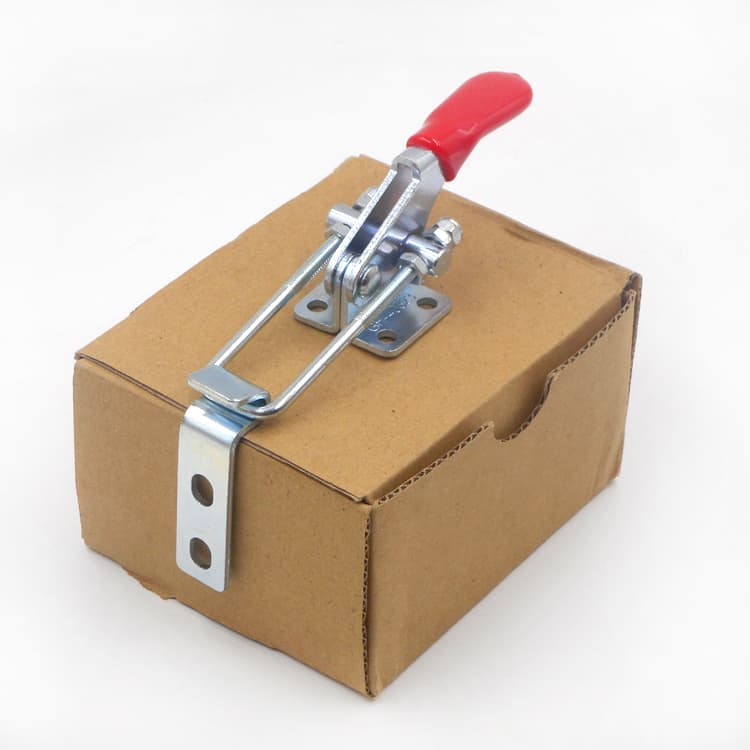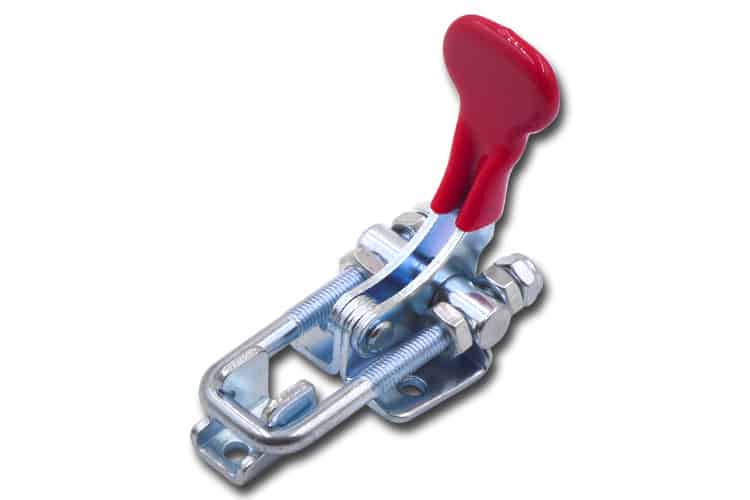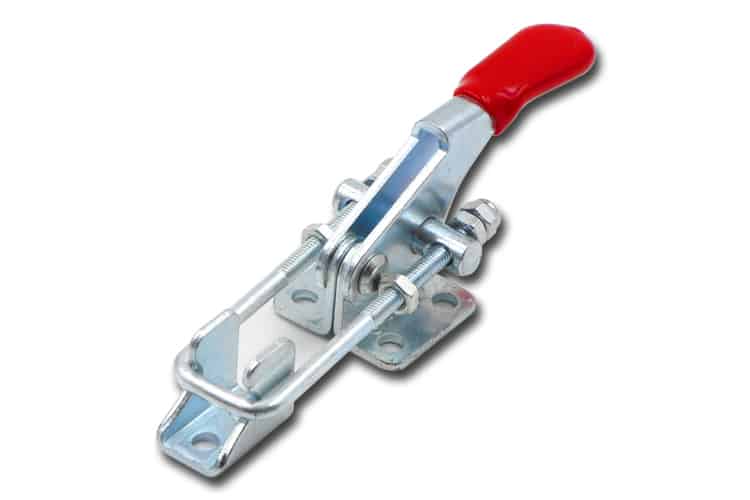Latch action toggle clamps are versatile and powerful tools used in a wide range of industries, from manufacturing to woodworking. These clamps are designed to provide a secure and reliable method of holding objects in place, allowing workers to perform tasks with greater precision and efficiency. In this essay, we will provide a comprehensive guide to latch action toggle clamps, including their types, how they work, proper installation and use, maintenance and care, and common problems and issues.
What is a latch action toggle clamp, and how does it work?
A latch action toggle clamp is a type of clamp that uses a locking mechanism to securely hold objects in place. The clamp consists of three main components: the clamp arm, the handle, and the base. The clamp arm is designed to move up and down, while the handle is used to operate the clamp. The base provides a stable foundation for the clamp and is typically attached to a workbench or table.
The locking mechanism of a latch action toggle clamp works by using a lever system. When the handle is in the “open” position, the clamp arm is free to move up and down. When the handle is moved to the “closed” position, the clamp arm is locked in place, providing a secure grip on the object being held.

What are the different types of latch action toggle clamps, and which one is right for my application?
There are several types of latch action toggle clamps available, each with its own unique features and benefits. The most common types of latch action toggle clamps include:
a. Horizontal toggle clamps: These clamps are designed for horizontal applications and are typically used to hold objects in place on a workbench or table.
b. Vertical toggle clamps: These clamps are designed for vertical applications and are typically used to hold objects in place on a wall or other vertical surface.
c. Push-pull toggle clamps: These clamps are designed to provide both pushing and pulling action, making them ideal for applications where both types of force are needed.
d. Hook toggle clamps: These clamps are designed to hold objects in place by using a hook-shaped clamp arm.
e. Latch toggle clamps: These clamps are designed to provide a high clamping force and are ideal for applications that require a tight grip.
f. Welding toggle clamps: These clamps are devices used to hold and secure workpieces in place during welding by using a lever system to apply clamping force.
When choosing a latch action toggle clamp for your application, it’s important to consider factors such as the size and weight of the object being held, the angle and direction of the force required, and the type of material being worked with. Consulting with a professional or manufacturer can help ensure you choose the right type of latch action toggle clamp for your specific needs.

How do I properly install and use a latch action toggle clamp?
Proper installation and use of a latch action toggle clamp are crucial for ensuring safety and achieving maximum effectiveness. Here are the steps for proper installation and use:
a. Mount the base of the clamp to a stable surface using screws or bolts.
b. Adjust the position of the clamp arm to ensure it will provide a secure grip on the object being held.
c. Test the clamp before use to ensure it is functioning properly and securely.
d. Use the handle to operate the clamp, moving it to the “closed” position to lock the clamp arm in place.
e. When releasing the object, move the handle to the “open” position to unlock the clamp arm and release the object.
f. Avoid over-tightening the clamp, which can cause damage to the object being held or the clamp itself.
g. Always follow the manufacturer’s instructions and guidelines for proper installation and use.
How do I maintain and care for my latch action toggle clamp to ensure it lasts a long time?
Proper maintenance and care can help extend the life of your latch action toggle clamp and ensure it continues to function effectively. Here are some tips for maintaining and caring for your clamp:
a. Clean the clamp regularly to remove dust, debris, and other contaminants that can affect its performance. Use a clean, dry cloth to wipe down the clamp after each use.
b. Lubricate the moving parts of the clamp to ensure they operate smoothly. Use a high-quality lubricant, such as silicone spray or machine oil, and apply it sparingly to the moving parts of the clamp.
c. Inspect the clamp regularly for signs of wear and damage. Check the screws, bolts, and other fasteners to ensure they are tight and secure. Look for cracks or other signs of damage that could affect the clamp’s performance.
d. Store the clamp in a clean, dry location when not in use. Avoid exposing the clamp to extreme temperatures, moisture, or other conditions that could damage it.
e. Always follow the manufacturer’s instructions and guidelines for maintenance and care.

What are some common problems or issues that can occur with latch action toggle clamps, and how can I fix them?
While latch action toggle clamps are designed to be reliable and durable, they can still experience problems or issues over time. Here are some common problems and how to fix them:
a. Sticking or jamming: This can occur if the clamp arm is not properly aligned or if debris or other contaminants have become trapped in the mechanism. To fix this, clean the clamp thoroughly and make sure the clamp arm is properly aligned.
b. Slipping or not holding securely: This can occur if the clamp arm is worn or damaged, or if the object being held is too heavy for the clamp. To fix this, replace the clamp arm if necessary or choose a larger, more heavy-duty clamp for heavier objects.
c. Broken handle: This can occur if the handle is subjected to excessive force or is worn or damaged over time. To fix this, replace the handle with a new one from the manufacturer.
d. Loose or wobbly base: This can occur if the screws or bolts holding the base in place have become loose. To fix this, tighten the screws or bolts and make sure the base is securely mounted to a stable surface.
Latch action toggle clamps are essential tools for many industries and applications. Understanding the different types of clamps, how they work, and how to properly install, use, maintain, and troubleshoot them can help ensure their safe and effective use. By following these guidelines, you can maximize the performance and longevity of your latch action toggle clamps and achieve greater precision and efficiency in your work.
